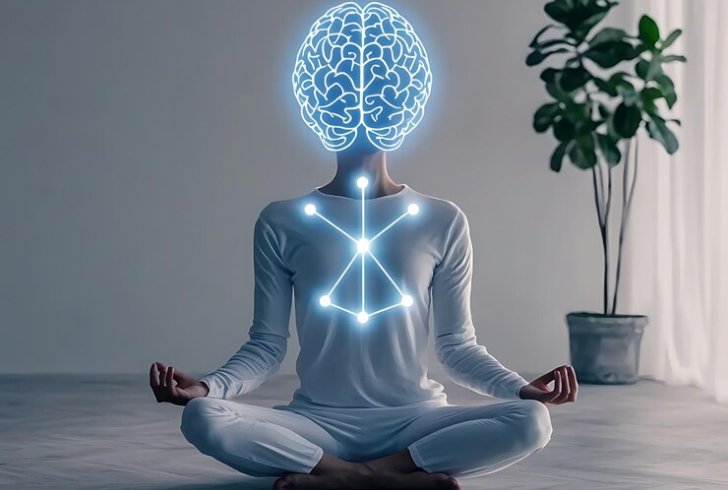The connection between mental and physical health isn’t a trend or theory—it’s a proven fact with real implications. While it's easy to focus on physical checkups or daily workouts, the role of the mind in long-term health often gets overlooked.
But understanding how the mind and body work together opens up new ways to live longer and feel better.
The Link That Can’t Be Ignored
What happens in the mind doesn’t stay there—it affects the body, and vice versa. Ever felt your heart race before a big presentation? Or noticed that ongoing stress leaves you exhausted, even when you’ve done nothing physically demanding? These reactions are clear signs of the mind-body connection in action.
Stress, anxiety, and other emotional states directly impact blood pressure, digestion, immune function, and sleep. At the same time, regular physical activity or being in nature boosts feel-good chemicals like serotonin and endorphins. That’s not a coincidence—it’s how the body responds to mental input.
Mindfulness practices like meditation and deep breathing reduce cortisol levels, lower inflammation, and even improve heart health. Movements like yoga or walking outdoors strengthen muscles and clear mental clutter.

Pexels | Kaboompics.com | Mental well-being and physical health are intertwined, with each influencing the other.
More Than Just Years
It’s not just about how long someone lives, but how well. That’s where HALE comes in. This stands for Health-Adjusted Life Expectancy, a measure developed to calculate how many years a person lives in good health, not just alive.
Maintaining physical health matters, no doubt. But ignoring psychological well-being can be just as harmful. Mental health affects sleep, energy, relationships, decision-making, and even the immune system. Longevity isn’t just about beating illness; it’s about living those extra years with quality and purpose.
How Thoughts Shape the Body
Thoughts aren’t harmless. Negative thinking, chronic worry, or unresolved trauma can trigger physical symptoms over time—like fatigue, chronic pain, or digestive issues. On the flip side, positive outlooks and emotional resilience tend to support better recovery and lower the risk of chronic disease.
Certain behaviors show just how intertwined the systems are:
- Feeling nervous can cause sweating, dizziness, or even nausea.
- Depression often leads to fatigue and appetite changes.
- Chronic anxiety can manifest as muscle tension and high blood pressure.
These are more than feelings—they’re physical expressions of mental strain.
The Mind as Software, the Body as Hardware
Think of the body like a device. It needs strong software (the mind) to run properly. A high-end laptop won’t function if the operating system crashes. Similarly, the mind can’t operate well if the body is worn down or neglected.
When either side of the system gets ignored, problems arise. A healthy lifestyle means tending to both—fueling the body and training the mind to handle stress, stay focused, and respond well to challenges.
Mental Health Is Part of Preventive Care
The same attention given to physical health, like exercise, diet, or doctor visits, should apply to mental wellness. That includes therapy, meditation, quality sleep, and social connection.
Connection to others is one of the most underrated factors in health. Support from friends or family releases oxytocin, which reduces stress and boosts feelings of trust and safety. Regular interaction, even casual conversations, can help regulate emotions and improve mental stability.
Spending time in nature, too, supports this balance. A simple walk outside can lift mood, calm the nervous system, and restore energy levels.
How the Mind Directs the Body

Freepik | Draw Studio| Just as a conductor guides music, mental focus guides physical responses and choices.
A good metaphor to understand this: The mind is the conductor, and the body is the orchestra. When the conductor is calm and clear, the music flows. But if the conductor is overwhelmed, the entire performance suffers.
This works in daily life too. When mental focus slips, making healthy decisions or responding to challenges becomes harder. And when the body is worn down, even simple mental tasks feel overwhelming.
Both systems support each other. They’re not separate pieces—they’re partners.
Self-Awareness Is a Health Tool
Tuning in to early signs of stress, fatigue, or emotional strain matters. Whether it’s through journaling, therapy, or simply slowing down, recognizing patterns in behavior or mood is an important form of health maintenance.
Just like listening to a car engine tells a mechanic what’s wrong, paying attention to mental and physical cues helps people intervene before small issues grow into major problems.
Starting at Any Age
The benefits of strengthening the mind-body connection apply whether someone is 25 or 75. Better focus, higher energy, stronger immunity, improved sleep, and a more positive outlook are available at every stage of life.
Even small shifts—like adding 10 minutes of mindful breathing each day, or reaching out to a friend instead of scrolling on a screen—can create long-term effects. A balanced mind helps the body stay strong, and a healthy body supports better mental clarity.
The Power of Balance for a Healthier Life
Every choice made in daily life—what to eat, how to move, who to spend time with, and how to handle emotions—feeds into overall well-being. Physical strength and mental peace aren’t separate goals; they’re part of the same system.
When the mind is steady, the body follows. When the body is cared for, the mind performs better. It’s not about perfection—it’s about paying attention to what both systems need. That attention is what leads to a longer, healthier, and more fulfilling life.








